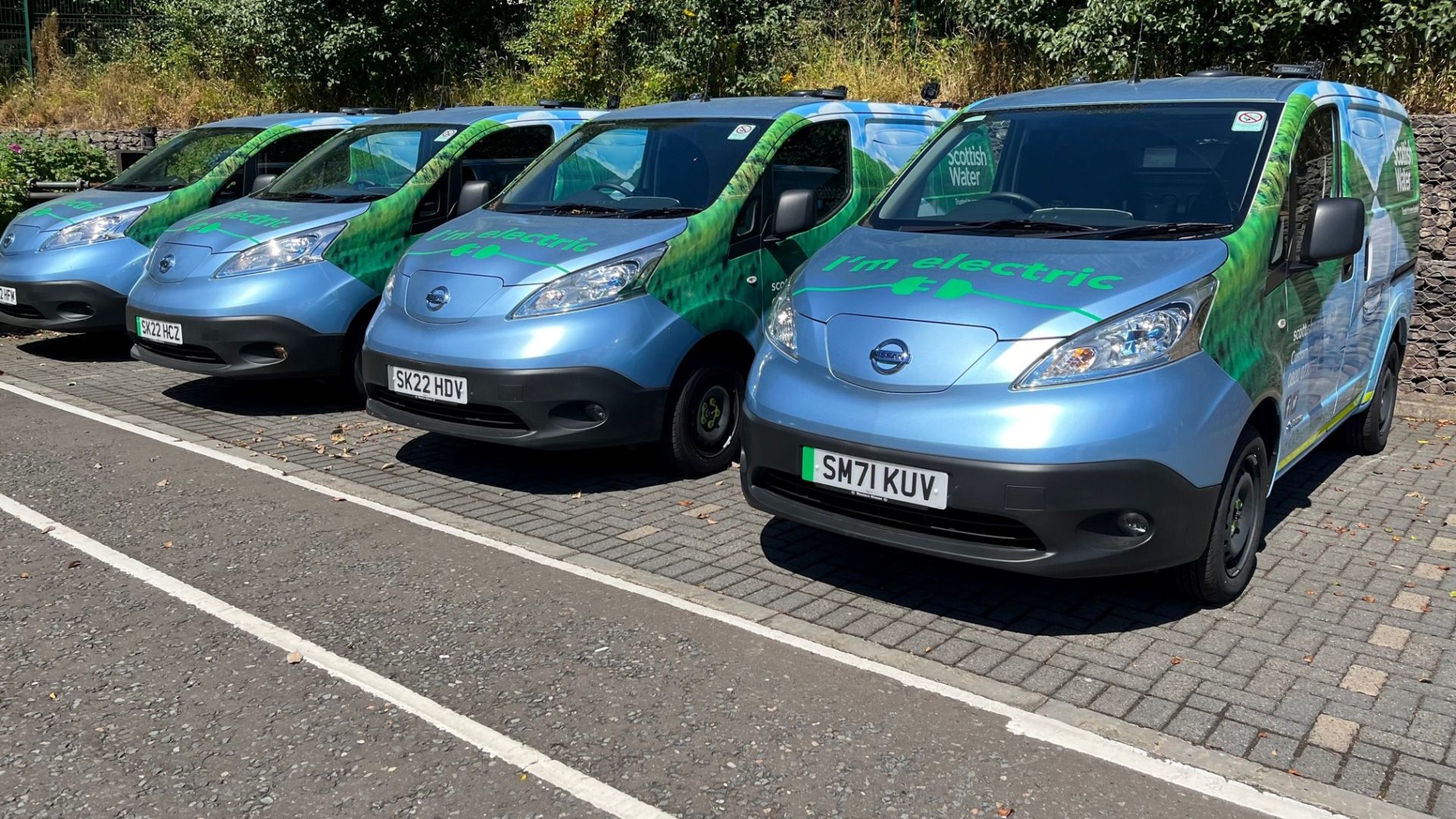
Scottish Water
Case Study
The Challenge
Scottish Water has committed to achieving net zero greenhouse gas emissions by 2040, with transitioning to a zero-emission vehicle fleet by 2030.
In 2020, Cenex recommended that Scottish Water could replace ~800 small and medium vans with battery electric vehicles and the associated charging infrastructure over the next replacement cycle, reducing fleet greenhouse gas emissions by at least 20%. Since then, Scottish Water has introduced more than 100 new electric vehicles to the fleet and installed 300 chargepoints across Scotland.
Despite this progress, it is far more challenging for Scottish Water to transition their large vans and heavy goods vehicles to zero-emission vehicles for the following reasons:
- Large vans need to tow heavy equipment and provide power to water pumps, jetting units, and other tools and equipment.
- Vacuum tankers are specialist conversions of rigid trucks and tractor units, they need to have enough space for large water tanks and also need to provide power to vacuum pumps and other equipment.
- Operations are challenging with relatively high daily mileage, and vehicles either based at home (large vans) or at depots all over Scotland.
The Development
Cenex worked with Scottish Water to understand their specific technical and operational requirements then engaged with low emission vehicle, infrastructure, and fuel suppliers to develop trial options for large vans and heavy goods vehicles covering battery electric vehicles, hydrogen vehicles, compressed natural gas vehicles using biomethane, and the use of hydrotreated vegetable oil in diesel vehicles. This included:
- Documenting vehicle and infrastructure requirements.
- Identifying potential trial locations.
- Identifying potential vehicle, infrastructure, and fuel suppliers.
- Undertaking supplier interviews and workshops.
- Issuing requests for information documents.
- Developing trial options and ranking them based on key criteria (vehicle availability, infrastructure availability, emissions savings potential, project timescales, project costs, and risk).
- Presenting the preferred options and recommendations to senior decision-makers and other key stakeholders at Scottish Water.
The Result
Since the completion of the project, Scottish Water has assessed the feasibility of trialling hydrotreated vegetable oil at their depots and placed an order for their first electric vacuum tanker which is due to be delivered in 2024. This vehicle will be used to understand the real-world performance of electric heavy goods vehicles and will be deployed across a range of different operations and conditions to inform the future rollout of additional vehicles if successful.
Scottish Water will also continue to assess, trial, and deploy new zero-emission vehicle technologies as they become available on the market, including understanding the technical and economic feasibility of using new battery electric and hydrogen fuel cell electric vehicles as potential replacements for their 44-tonne vacuum tankers used for longer distances between wastewater treatment works.
